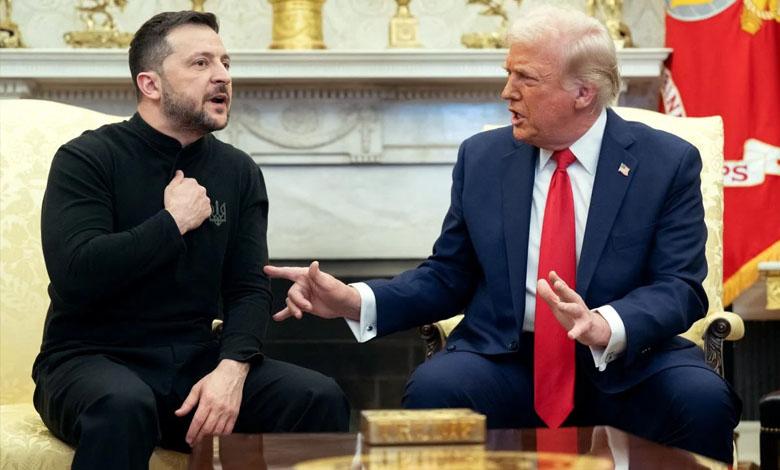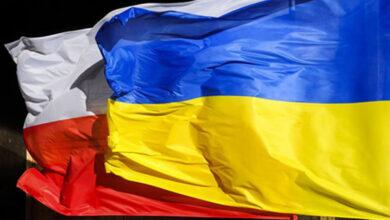Five demands of Kyiv: The Telegraph reveals Ukraine’s amendments to Trump’s ‘peace plan’

After the summit in London, which famously did not go according to plan, negotiations continue on the wording of a potential peace agreement. Despite the diplomatic veil, it is increasingly becoming obvious: the positions of Kyiv and Washington are still far from agreed. Although the USA formally “holds the pen” and is preparing a draft of the document, the European allies persistently introduce their amendments, and Ukraine clearly articulates its own red lines. While the lobbying front of the West is trying to bring the parties to a common denominator, in high offices there is a struggle not only for wording, but also for principles.
Trump’s diplomatic pressure is growing
Edition The Telegraph received access to five key demands that official Kyiv formulated in the context of peace negotiations. And it is these points that expose the deep differences between the Ukrainian vision of ending the war and the recently announced American seven-point plan. Crimea is at the center of the dispute. Ukraine categorically rejects any possibility of even indirect recognition of the annexed peninsula as Russian territory. This position defines the limit of compromise, beyond which Kyiv is not ready to cross, even under pressure from the main partner.
Against this backdrop, Donald Trump trying to balance between pre-election promises to “stop the war” and the reality of brutal aggression. On Thursday, he reacted emotionally to the Kremlin’s new massive air strike on Kyiv, which killed at least 12 people. In a post on his Truth Social platform, Trump actually addressed Putin publicly:
“I am not happy about the Russian strikes on Kiev. It is unnecessary and terrible at the same time. Vladimir, STOP! Five thousand soldiers die every week. Let’s make a peace agreement already!”
This appeal, formulated categorically and imperatively, demonstrates both nervousness in the White House and a desire to demonstrate to voters that the peacemaking process is underway and the president is acting. Trump’s pre-election slogan about a quick end to the war is gradually transforming into concrete diplomatic pressure, and the very format of the negotiations into a difficult confrontation not only with the enemy, but also with allies who are tired of waiting. Ukraine is faced with a difficult choice: either to hold a position and risk isolation, or to agree to compromises that may cost the future.
What amendments has Ukraine prepared to Trump’s peace plan?
Kyiv’s demands reflect Ukraine’s desire to effectively prevent any formal international recognition of Russian sovereignty over Crimea and other temporarily occupied territories.
The first two points of the Ukrainian demands for a peace agreement, handed over to the allies at the negotiations in London, have not only legal, but also strategic weight. They insist that any agreement to end the war with Russia must be based solely on the norms of international law — in particular, the principles of territorial integrity, non-interference, and the prohibition of aggression — and not be formalized by the capitulation of a weaker party under the pressure of force.
It is no accident that this provision has a global connotation: the documents separately mention a possible precedent that such a “coercive agreement” could create. It is about a potential Chinese invasion of Taiwan. If the international community agrees to an agreement recognizing Russia’s right to seize foreign territories, it will open the way for Beijing to justify aggression against the island by “restoring historical unity” or “internal conflict.” Thus, Ukraine emphasizes that Russia’s concession will create a dangerous global precedent that can legitimize the redistribution of borders by force in the 21st century.
In this context, Kyiv calls on allies not only to think about the Ukrainian-Russian front, but to consider the situation in a broader geopolitical perspective. Preserving the principles of international law is not only the protection of Ukraine, but also a safeguard against future conflicts in East Asia and other regions.
That is why Kyiv categorically opposes any wording that could be interpreted as recognition of Russia’s territorial gains, even in a temporary or transitional format. Without clear, tough security guarantees, commitments to protect sovereignty and prevent further aggression, no agreement should be signed. Ukraine’s position remains unchanged: peace, yes, but not at the price of a future catastrophe for the world order.
The third point of the Ukrainian demands has a clear political orientation and concerns not the content, but the structure of the negotiation process itself. What is its essence? Ukraine insists on returning to a multilateral, internationally agreed format of peace settlement, where Kyiv will not be an object of pressure or exchange, but a full and equal participant in the process.
This point is actually a response to the increasingly active attempt by the Donald Trump administration to take sole control of the negotiations to end the war. Washington is increasingly pushing its own seven-point plan, which Kyiv believes creates a risk of marginalization of Ukraine in a critical process for it. Instead of a diplomatic settlement within the framework of international consensus, a situation is created in which one superpower seeks to impose a compromise without fully considering the position of a country waging a war for its survival.
Return Ukraine to the center of the peace process
The third point directly indicates: Ukraine seeks to return to a broad format of negotiations. We are talking about possible frameworks involving the EU countries, the G7, possibly China and the states of the Global South. The main goal is to prevent the peace agreement from becoming the result of a behind-the-scenes bargain between the US and Russia, in which Ukraine would be an “appendix” to a larger geopolitical agreement.
In fact, it is a demand to restore the legitimacy of the process. And at the same time block any attempt by the Trump administration to use the Ukrainian issue as an element of domestic American politics or a personal diplomatic “triumph”.
The fourth point of Ukrainian demands is a strategic warning directed directly at the United States and NATO countries. Its content is not only in the defense of Ukraine’s national interests, but also in a clear indication that any wording of the peace agreement, which involves the actual or legal recognition of Russian control over Crimea, poses a direct and long-term threat to the entire Black Sea region.
Kyiv insists: the loss of Crimea is not only the loss of Ukrainian territory. This is a shift in the balance of power in the Black Sea. The peninsula, transformed by Russia into a giant military base, is already today a bridgehead for power projections — missiles are launched from it at Ukrainian cities, maritime logistics are controlled from it, and Russia can put pressure on other states in the region from it. If this control is consolidated politically – even in a veiled form – it will mean that a new permanent center of aggression will appear in the Black Sea, aimed not only at Ukraine.
From the point of view of Ukrainian diplomacy, this development has direct consequences for Turkey, Romania and Bulgaria — NATO members located on the Black Sea coast. The constant militarization of Crimea, as well as the possible establishment of a blockade, control over trade routes and a show of force — all this will destroy the security balance that has been maintained in the region for decades.
Inadmissibility of restrictions on the defense of Ukraine
The fifth point emphasizes the inadmissibility of using the peace agreement to limit the potential of the Ukrainian armed forces or the defense industry. It establishes a strategic red line: a state that has suffered a large-scale invasion cannot emerge from a war weaker than it entered it, much less with its hands tied by peace terms.
Kyiv emphasizes: any attempt to include in the peace agreement provisions that limit the number, armament, structure or functioning of the Armed Forces of Ukraine is unacceptable. This applies to both the hypothetical clauses banning the placement of Western weapons and restrictions on the development of one’s own defense-industrial complex. Such a perspective is perceived in Ukraine as a trap: imposing limits on one’s defense means voluntarily accepting vulnerability in the future. This point also contains an unequivocal message to allies: Ukraine will not repeat the mistakes of the Budapest Memorandum. It has already given up nuclear weapons once in exchange for paper guarantees — and paid for it with territories, lives and years of war. A repetition of this history in a new form – due to the limitations on the development of the army – will not be accepted.
Finally, the fifth point is also a message for the US and the EU: real security is not in restrictions, but in deterrence. Ukraine has the right and obligation to build a powerful, modern army and defense industry, which not only protects it, but also strengthens the entire European security system. And the peace that forbids Ukraine to have power is not peace. This is a delayed threat.
As The Telegraph reports, Ukraine’s Western partners are promoting the proposed changes. British Prime Minister Kier Starmer said in an interview with the publication that the negotiations are at an intensive stage. According to him, there is hope that a long-term ceasefire can be announced by the summer. Speaking to the publication, Starmer said: “Only Ukraine has the final right to decide on what terms to end the war, and no other world capital can dictate to Kyiv what peace will look like. Peace cannot be imposed, it must be the choice of Ukraine itself. And Russia must agree to a cease-fire without preconditions.”
Starmer also expressed hope for security guarantees from the US for the so-called “coalition of the willing” — a group of European states that are preparing to deploy their military presence in Ukraine after reaching agreements. At the same time, as specified The Telegraph, London adjusted its plans: instead of a large-scale contingent, Britain is currently preparing to send military instructors to Ukraine.





